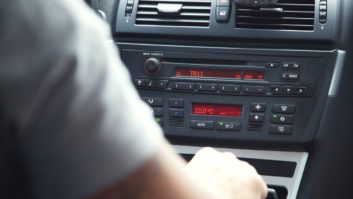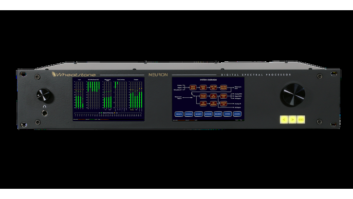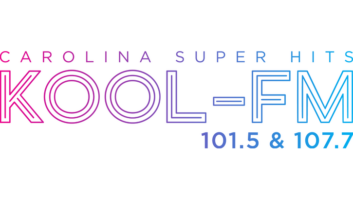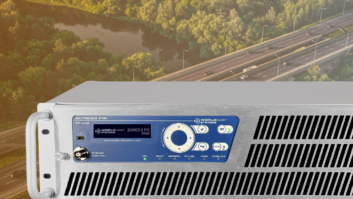LOS ANGELES The never-ending race for revenue has some broadcast groups taking another look at the Radio Data System, a text and data delivery technology that failed to catch the attention of most broadcasters when introduced in the United States in 1993, as a possible means of boosting bottom line through non-traditional advertising.
Following the lead of Clear Channel and at least one other major radio group, some broadcasters appear ready to take the RDS leap.
Determining the number of vehicles on the road equipped with RDS-ready radios is difficult; the Consumer Electronics Association has no current market research on the technology. Radio frequency subcarrier management and wireless data distribution firm dMarc Networks Inc. estimates that RDS-enabled radios are a standard feature on more than 75 percent of new automobiles sold in the United States.
RDS allows radio stations to incorporate inaudible signals into their broadcasts on the 57 kHz subcarrier to control RDS-enabled radios. Those signals, for example, can trigger text on a car radio’s display screen and scroll station call letters and streaming slogans.
RDS at home
The renewed interest in RDS services comes as stations are exploring more non-traditional revenue opportunities.
Along with the name of the radio station and artist information of the tracks being played, RDS can flash sponsorship messages on car radios equipped with the technology. A CEA spokesman said RDS technology also is finding its way into some home stereo systems.
Meanwhile, broadcasters are positioning themselves to take advantage of consumer interest in RDS services. Clear Channel Communications and dMarc signed an agreement earlier this year to launch dMarc’s dRDS or dynamic radio data service across 53 Clear Channel radio stations throughout Southern California.
The two companies tested the text-based programming method at KIIS(FM) and KOST(FM) in Los Angeles last year with good results, according to Roy Laughlin, regional vice president and Los Angeles market manager for Clear Channel Communications.
Laughlin stated in a press release announcing the agreement, “dRDS has created an entirely new media and distribution outlet for our stations. In less than 10 months after launching the service, we billed over $100,000 in dRDS advertising. We were able to monetize this new programming through advertising.”
Chad Steelberg, CEO of dMarc, said, “By using underutilized data carriers and sidebands, we can produce good consumer content through traffic, weather, sports and station promotions while generating revenue for terrestrial broadcasters.”
Steelberg said dMarc is testing text data service with broadcasters in Houston and Dallas and that he hopes to sign Clear Channel’s entire group of radio stations, approximately 1,225 at last count, to deploy dRDS.
Entercom announced in April that it would equip 58 of its FM stations in top radio markets with RDS services using Dynamic Data Initiative software from The Radio Experience.
“Right now, we are only running (scrolling text) of station call letters, positioning statements and song title and artist information,” said John Price, assistant to the vice president of engineering for Entercom. “Generating revenue by some means, maybe through sponsorships of some kind, is obviously the long-term goal.”
Price said Entercom is spending almost $150,000 to deploy RDS across the 58 stations.
Allen Hartle, president of The Radio Experience, said the arrival of XM Radio and Sirius and their data text display systems helped provide incentive for terrestrial broadcasters to make an investment in RDS and improve the radio experience for listeners.
New incentive?
“I think radio management is finally saying, ‘Hey, it’s time for this to evolve and add some complexity to the system.’ The threat of new media is acting as an incentive, I think,” Hartle said.
He recalls hearing broadcaster concerns about low consumer demand and doubts about the benefits of transmitting RDS over the last 10 years.
“They did not immediately see the financial gain from it because it was not tied to direct revenue. I believe that is changing. RDS was really back-burnered when Internet streaming became the hot thing in the late 1990s,” Hartle said.
Steelberg said, “There’s a feeling that the broadcasters now think there are enough RDS receivers in the marketplace to merit trying to see what the response will be. The awareness level is rising … the public’s and broadcasters’ attention to it.”
The program data capabilities of HD Radio will open possibilities for terrestrial broadcasters taking their first baby steps into ancillary services, proponents said.
“We have done a lot of work making sure this common platform of ours is fully compatible with the Ibiquity folks. Broadcasters will be able to manage the datacasting both on traditional analog and future Ibiquity deployments,” Steelberg said.
Hartle said he believes HD Radio will offer many opportunities for broadcasters, including “text, graphics, even video services.”
Cumulus Broadcasting Corporate Director of Engineering Gary Kline said the broadcaster is in the process of running RDS tests and is excited about the potential of datacasting.
“We are looking at a number of applications for RDS. We see lots of potential to utilize text in the radio display to enhance our marketing strategy, advertising sales and music promotion.
“We also see ways to tie the display messaging with cell phones, PDAs (personal digital assistants) and other wireless technologies to allow a two-way path of communication between the listener and station. HD Radio will allow even greater flexibility with the greater bandwidth,” Kline said.
Conservative view
Kline said the decision to roll out RDS will likely be a market-by-market decision for Cumulus. “In some markets the 57 kHz channel isn’t even available for RDS because it is leased to a third party.”
Even though the Consumer Electronics Association no longer tracks how many RDS-enabled radios are in the marketplace, CEA spokesman Dave Wilson said, “There is still an interest from manufacturers in RDS. However, I’m not aware of any research data to confirm how many receiver manufacturers are producing RDS radios at this time.”
That lack of data from receiver manufacturers is enough reason to make some broadcasters take a conservative approach to RDS.
“We have looked at it, specifically in Los Angeles, and may still consider utilizing it in the future. It’s still a bit of an unknown,” said Kate Healy, spokeswoman for Emmis Communications. “We are still focusing our revenue efforts in other areas at this time.”
Dave Stewart, vice president of engineering for Hispanic Broadcasting Corp., said the broadcaster has RDS on several HBC stations. “It’s neat where stations use it. I think program data will be a very common thing with HD Radio deployment,” he said.







